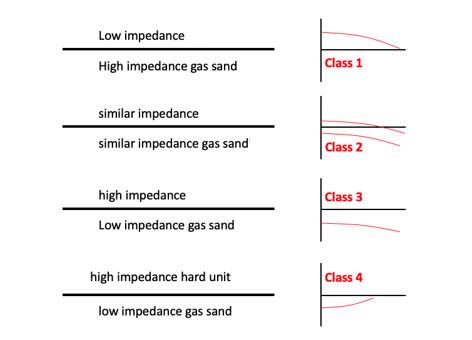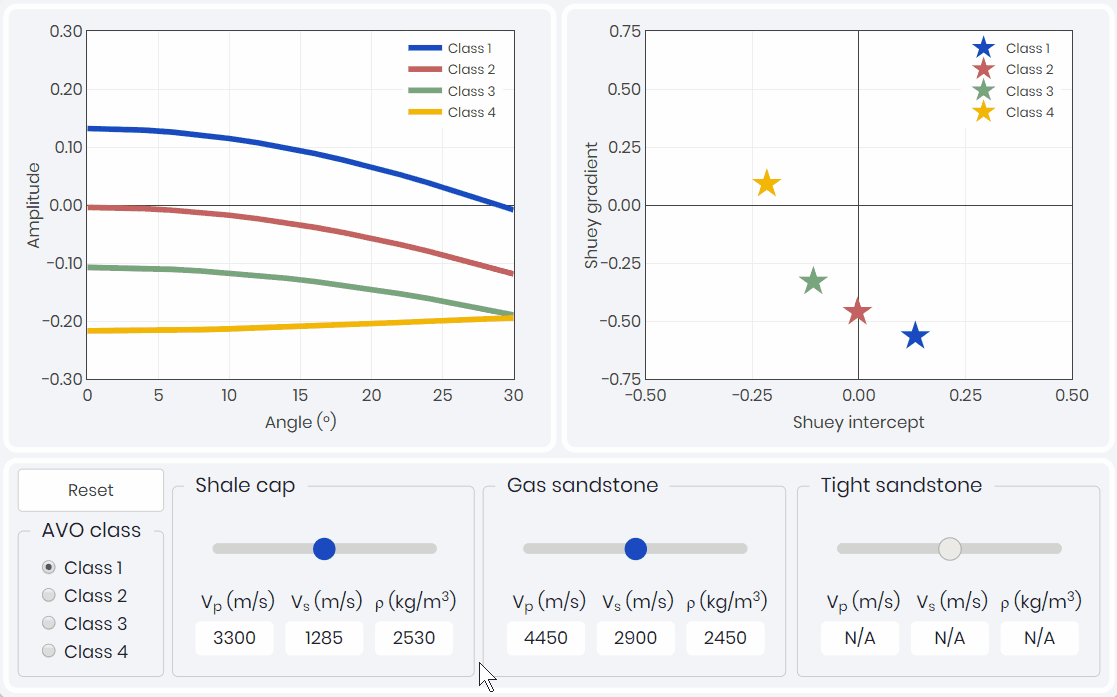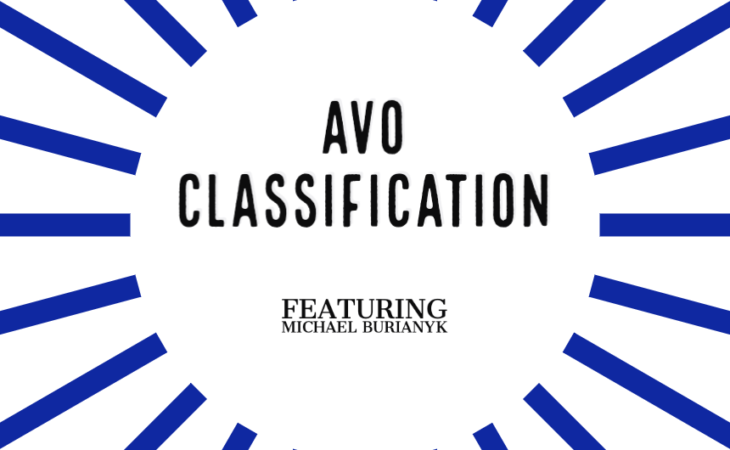The Amplitude Variation with Offset (AVO) is a geophysical technique that evaluate the variations in seismic reflection amplitude with changes in distance between shot points and receivers.
Classification of the AVO response enables geoscientists to arrive at better interpretation of reservoir rock properties.
The first applications of AVO methodologies were in the context of gas sands. Rutherford and Williams (1989) systematized gas sand behavior into three classes based on their amplitudes and gradients. It was further elaborated by Castagna and colleagues, almost a decade later, who added a fourth class. In this blog post we provide a concise description of different AVO classes.
The Different AVO Classes
Class 1
A Class 1 anomaly is due to low impedance shales over high impedance gas sands that result in positive amplitudes at low angles that decrease amplitude with increasing angle. They may change polarity at far enough angles. This is more common with onshore, hard rock, mature sand with moderate to high compaction. In terms of the Shuey terminology this is a positive intercept and a relatively large, negative gradient.
Class 2
A Class 2 anomaly from a near-zero impedance contrast. That is, the overlying shale has similar properties to the underlying gas sand that is moderately compacted and consolidated. The AVO response is a small positive or negative amplitudes which likely falls to negative values – that is, a polarity change at some higher incidence angle. The AVO attributes low positive or negative intercepts and negative gradients generally smaller than Class 1.
Class 3
A Class 3 anomaly results from higher impedance shales over low impedance uncompacted and unconsolidated gas sands causing large negative amplitudes which increase in magnitude as the angle of incidence increases. On a Shuey attribute plot, this is seen as a relatively high negative intercept and a negative gradient smaller than Class 2. However, since the amplitude magnitude increases with offset, stacked amplitudes can be very large and can result in the ‘bright spots’ of earlier AVO interpretation.
Class 4
A Class 4 anomaly is a special case of Class 3 as it involves low impedance, uncompacted and unconsolidated gas sands overlain by high impedance cap rocks like hard, silaceous or calcareous shales, siltstones or tightly cemented sands or carbonates. Here, negative reflection coefficients decrease their magnitude with angle giving Shuey attributes of a negative intercept and a small positive gradient. The Class 4 is the only anomaly with a positive gradient.

While this classification can be useful, it is a very limited way to interpret AVO results since it is quite specific to only gas sands and is not general at all. But it is a very well-known categorization and important from at least an historical perspective. In a general context, most AVO behavior falls into ‘Class 1’ and ‘Class 2’ but there is no implication that such behavior is distinctly indicative of a gas sand.
Caveat Emptor! Interpretations need to be made in proper context. If there is a geologic context for suspecting gas sand reservoirs, then this framework might be useful.
Michael Burianyk, Scientific Advsior

Above ☝️ is an AVO Classes simulation hosted on the metaKinetic platform. Using this application you will become acquainted with the concept of AVO classes for gas sands. It categorizes the changes in the Shuey attributes as the gas sands soften in relation to their overlying cap rocks based on velocity input.
Want access to this simulation and more on the metaKinetic platform? Contact us!
